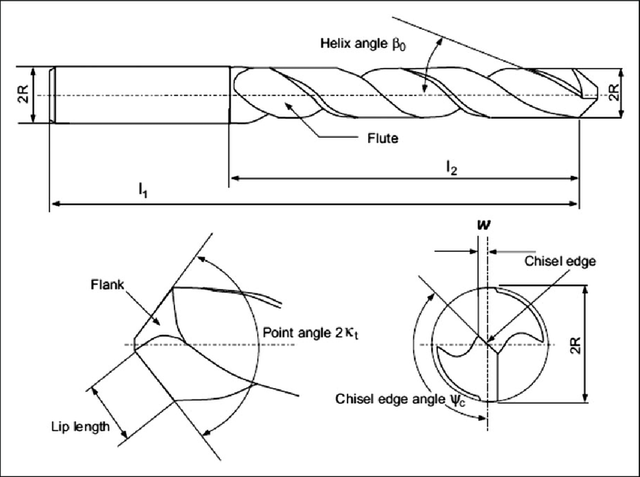The Complete Guide to Drill Bits: Types, Uses, and Tips

The Complete Guide to Drill Bits: Types, Uses, and Tips
Introduction
Drill bits are indispensable tools for drilling precise holes in various materials like wood, metal, plastic, and masonry. Selecting the right drill bit can make a huge difference in efficiency and accuracy. In this blog, we will explore the types of drill bits, their uses, and tips for maintaining them.
- Types of Drill Bits
Drill bits come in different shapes, sizes, and materials, each designed for specific tasks:
• Twist Drill Bit: The most common type, ideal for drilling wood, metal, and plastic. It features a pointed tip with helical grooves, or flutes, that remove material as it drills.
• Masonry Drill Bit: Designed for concrete, brick, and stone. These bits have a tungsten carbide tip that can withstand hard surfaces.
• Brad Point Drill Bit: Perfect for woodworking, the sharp center point allows precise positioning and clean holes in wood.
• Spade Drill Bit: Used for fast, rough drilling in wood. It has a flat, paddle-like design for larger diameter holes.
• Forstner Bit: Ideal for cutting clean, flat-bottomed holes in wood. Used often in cabinetry and woodworking projects.
• Hole Saw: Great for cutting large, round holes in wood, metal, and drywall. It has a ring-shaped blade with teeth around the edge.
- Material Composition of Drill Bits
The performance of a drill bit depends heavily on its material. Common materials include:
• High-Speed Steel (HSS): Suitable for general-purpose drilling in wood, plastic, and metal. HSS bits are durable and cost-effective.
• Cobalt: Cobalt drill bits are known for their heat resistance, making them ideal for drilling hard materials like stainless steel and cast iron.
• Carbide-Tipped: These bits are extremely hard and maintain their sharpness longer than HSS or cobalt. They are used for drilling through tough materials like tile, masonry, and metal.
- How to Choose the Right Drill Bit
When selecting a drill bit, consider the material you’re drilling, the size of the hole you need, and the depth required. Here are some tips:
• Match the Bit to the Material: Use a twist bit for general work, a masonry bit for brick or concrete, and specialized bits like Forstner or hole saws for woodworking.
• Check the Diameter: Ensure the drill bit size matches your project’s needs, whether you’re drilling small pilot holes or large ones for pipe installations.
• Drilling Speed: Harder materials like metal require slower drilling speeds, while wood and softer materials can be drilled at faster speeds.
- Maintaining Drill Bits
Proper maintenance can extend the life of your drill bits:
• Keep Them Sharp: Regularly sharpen bits using a drill bit sharpener or grinding wheel to maintain precision cutting.
• Use Coolant: When drilling hard materials like metal, apply cutting oil or coolant to reduce friction and prevent overheating.
• Store Properly: Store drill bits in a case to protect the edges from dulling and to keep them organized by size and type.
- Safety Tips
Always prioritize safety when using drill bits:
• Wear Protective Gear: Eye protection is essential to shield from flying debris.
• Secure the Material: Ensure the material you’re drilling is properly clamped or held in place.
• Use the Right Pressure: Apply steady, controlled pressure to avoid breaking the bit or damaging the material.
Conclusion
Drill bits are versatile tools that come in various types designed for specific tasks. Understanding their differences and maintaining them properly ensures better performance and longevity. Whether you’re working on a DIY project or professional construction, the right drill bit will make your work faster and more efficient.
What’s your favorite drill bit for your projects? Share your thoughts in the comments! 💬